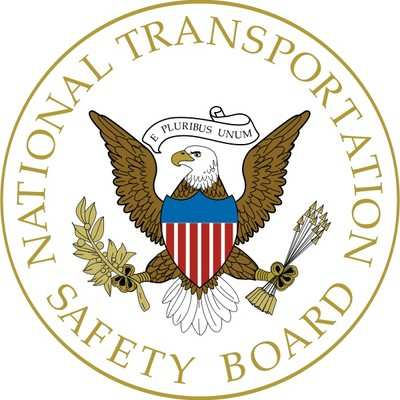Breaking the Yaw
The NTSB has released its final report on a 12 April 2021 accident in which a Piper PA-28-140 Cherokee, registration N7242F, was substantially damaged when the aircraft impacted ground during an attempted go-around at Virginia’s Shenandoah Valley Regional Airport (SHD).

The Cherokee’s pilot and single passenger suffered serious and minor injuries respectively.
The pilot of the accident aircraft reported that while landing at the conclusion of a Part 91 personal flight, he determined—at an altitude of less than one-hundred-feet AGL—that the approach was unstable. In accordance with best-practices, the pilot initiated a go-around.
Notwithstanding smooth application of engine power, the aircraft failed to climb, however, and entered a steep portside bank. The pilot stated the airplane tracked left of the runway despite his application or right aileron and right rudder.
Unresponsive to control inputs, the Cherokee impacted a fence and trees.
Post-accident investigation of the aircraft’s wreckage revealed the plane’s rudder bar arm and rudder pedal tube—integral components of the machine’s rudder control assembly—had separated near a weld. Extensive corrosion was observed on the fracture surfaces.
Examination under magnification revealed the fracture of the rudder arm had begun with an unknown overload event, after which the observed crack had grown slowly. As the crack developed, the fracture surfaces abraded against each other until the scissure had grown to such an extent that the weld at the base of the rudder tube failed, occasioning a cup-and-cone failure characterized by fresh substrate at the bases of the fracture surfaces.
Three-months prior to the accident, at the time of the Cherokee’s most recent one-hundred-hour inspection, the aircraft had accrued approximately 11,406-airframe-hours. A review of Piper’s published guidance revealed multiple documents citing inspection requirements and detailing inspection procedures germane to the aircraft’s rudder pedals, rudder bar, and rudder bar support assembly—the entireties of which were readily accessible to and could easily have been visually inspected by maintenance personnel.
Review of the accident aircraft’s maintenance records revealed maintenance personnel had made no entries referencing the published inspection requirements pertaining to the plane’s rudder pedals, rudder bar, or rudder bar support assembly.

NTSB investigators determined the accident aircraft would likely have remained controllable even without rudder control. However, a six-knot right-to-left crosswind prevailing at the time of the mishap and the aircraft’s proximity to the ground at the commencement of the attempted to-around rendered the rudder failure sufficiently significant to induce loss of aircraft control.
Ergo, the National Transportation Safety Board determined the probable cause(s) of the described accident to be failure of the Cherokee’s rudder control assembly and the pilot’s loss of aircraft control secondary to maintenance personnel’s inadequate inspection of the plane’s rudder control system.
Parties interested in reviewing the accident report in its entirety should reference NTSB accident number ERA21LA183.
 ANN's Daily Aero-Linx (11.25.25)
ANN's Daily Aero-Linx (11.25.25) NTSB Final Report: Glasair GlaStar
NTSB Final Report: Glasair GlaStar ANN FAQ: Turn On Post Notifications
ANN FAQ: Turn On Post Notifications Classic Aero-TV: Red Tail Project Update Taking the Mission to the People
Classic Aero-TV: Red Tail Project Update Taking the Mission to the People Airborne 11.24.25: ANN's 30th!, Starships V3 Booster Boom, Earhart Records
Airborne 11.24.25: ANN's 30th!, Starships V3 Booster Boom, Earhart Records




